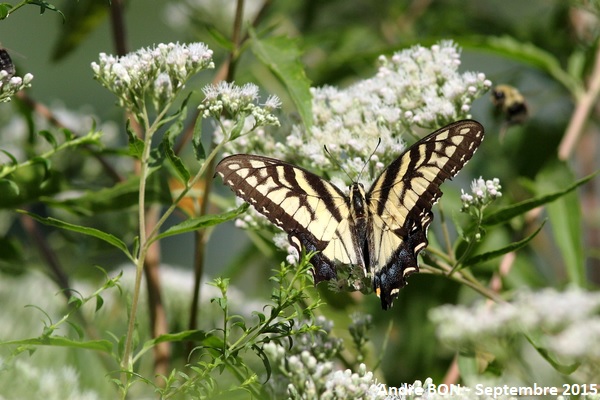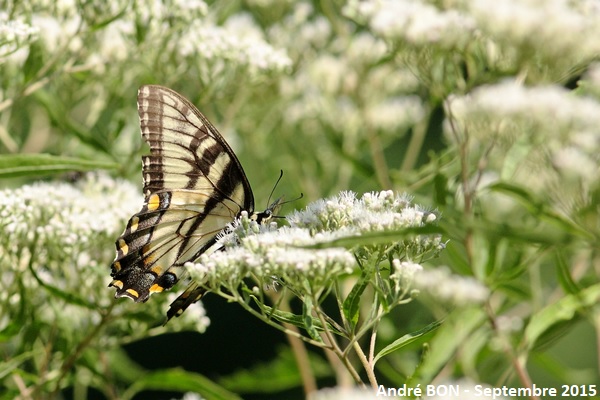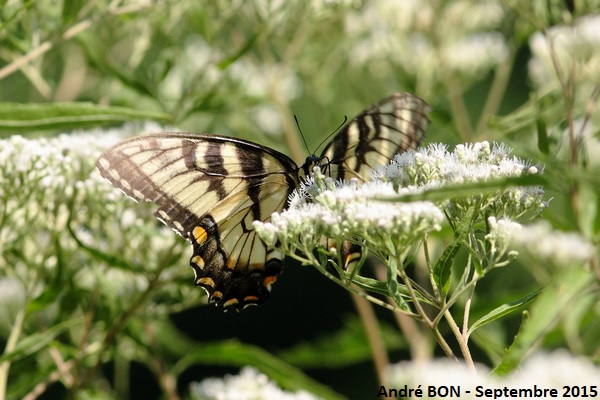


| Eastern Tiger Swallowtail (Pterourus glaucus (Linnaeus, 1758)) |



|
|
Scientific name: Pterourus glaucus (Linnaeus, 1758) Common name: Eastern Tiger Swallowtail French name: Papillon glauque Order: Lepidoptera Suborder: Rhopalocera Family: Papilionidae Subfamily: Papilioninae Wingspan: 79-140 mm. Biotope: Forests, river banks with trees, parks. Geographic area: Eastern half of North America, from southern Canada to Mexico. Flight time: From late February, early March in Florida, from May to September in the northern part of the range. Number of generations : 1 or 2 in the northern part of the range, 3 in the southern part. Caterpillar: The two last instars are green with a swollen thorax and rows of small blue spots on the lateral sides. There is one pair of false eyes at the upper front, made by a black outlined yellow ring with a small blue spot in the centre. Host plant: Many deciduous trees and shrubs. |
The Eastern Tiger Swallowtail is a large pale yellow butterfly which bears a small tail on the hind wings. It shows four black stripes on the fore wings. When the butterfly is landed, the most inner stripe is aligned with the black median stripe ornating the hind wings. The wings' margins are black with a row of yellow spots. Females show a band of blue patches on the hind wings. Some females are blackish brown on both wings with a row of yellow submarginal spots and blue post-median patches on the hind wings. The Eastern Tiger Swallowtail over winters as a chrysalis. There is a possible confusion with the Canadian Tiger Swallowtail (Pterourus canadensis), previously considered as a subspecies, and the Appalachian Tiger Swallowtail (Pterourus appalachiensis). The first one is a smaller size and the second one a larger size. These two species show a solid yellow stripe under the fore wing's margin where the Eastern Tiger Swallowtail shows a row of spots. |
| [To know more about the Eastern Tiger Swallowtail] [Next picture] [Top] |

|
Here is my very first picture of a north American butterfly, shot during a short one-week stay in New-York City. The wings are a little damaged but I think that the blue markings on the hind wings indicate one female. |
| [To know more about the Eastern Tiger Swallowtail] [Next picture] [Previous picture] [Top] |

|
This view of the underside of the fore wing shows the row of yellow spots at the margin which, if I'm not wrong, leads the species identification to Pterourus glaucus rather than Pterourus canadensis. |
| [To know more about the Eastern Tiger Swallowtail] [Previous picture] [Top] |

|
Another view of the underside of the wings. |